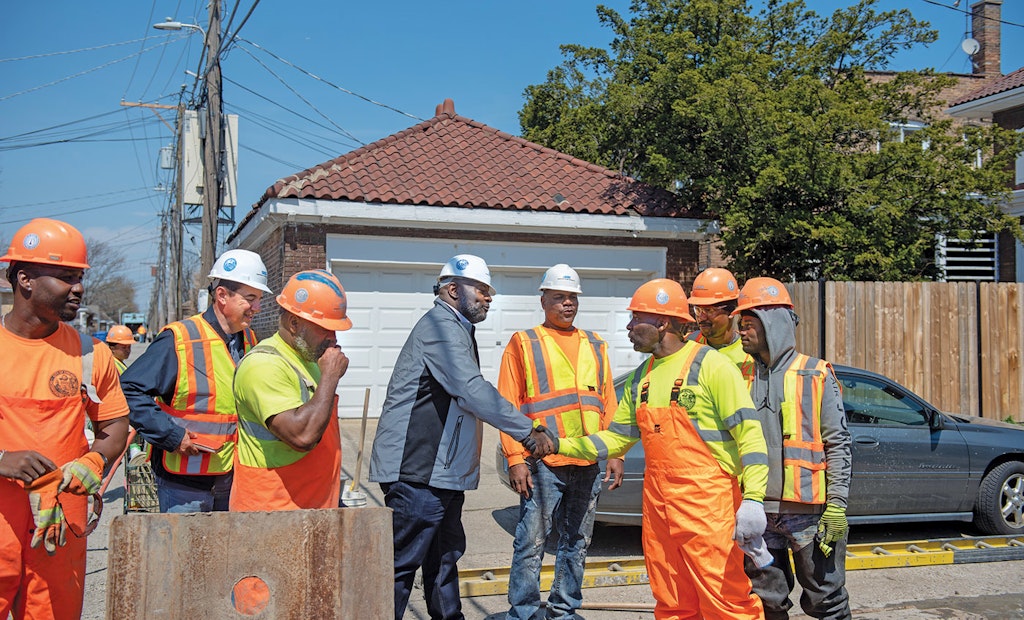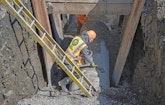
Randy Conner, commissioner of the Chicago Department of Water Management, talks with workers on site at a sewer main replacement project.
The City of Big Shoulders is also the City of Big Water.
Chicago’s Department of Water Manage-ment is capable of producing 2.1 billion gallons of potable water per day, serving 490,000 accounts and 5.3 million customers throughout Chicago and 125 neighboring suburbs. That’s...








